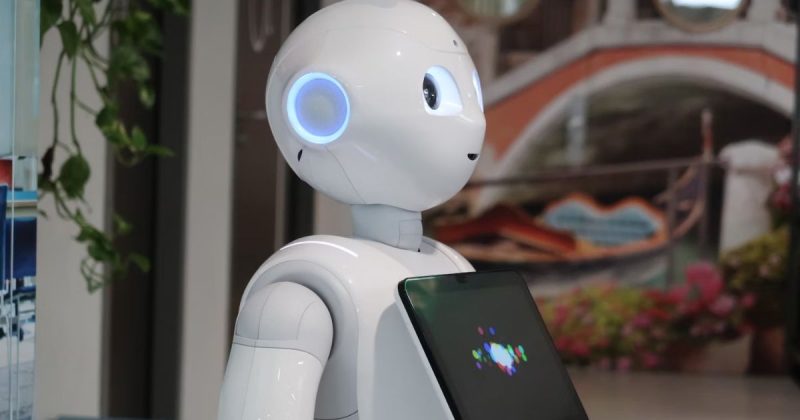Autonomous household robots are AI-powered assistants that simplify daily tasks and enhance efficiency. These robots seamlessly integrate into smart home ecosystems, working in tandem with connected devices to create a more personalized, hands-free lifestyle. From self-navigating vacuums to robotic chefs and security bots, these futuristic helpers reshape our lives. They can clean, cook, and even provide companionship while learning your preferences and adapting to your routines, leaving you more time for what matters most. As technology evolves, these robots become indispensable components of modern homes, offering unmatched convenience and efficiency.
How Autonomous Household Robots Work
Autonomous robots are powered by various advanced technologies that enable them to operate independently, learn from their environment, and adapt to changing AI and machine learning applications. Artificial intelligence (AI) and machine learning are autonomous robots. These advanced algorithms enable the robots to learn from their environment and adapt to the habits and preferences of the people in the home. The more a robot interacts with its environment, the better it becomes at performing tasks, improving its accuracy, efficiency, and reliability over time. For example, a cleaning robot will learn the layout of your home, recognize furniture, and adapt to obstacles to ensure it can clean your space without missing a spot.
1. Smart Home Integration
One of the most powerful features of these robots is their ability to integrate seamlessly with other smart devices. Many autonomous robots are compatible with Amazon Alexa, Google Home, and Apple HomeKit. This allows users to control the robots using voice commands, making it easier to perform tasks without lifting a finger. Whether you’re asking your robot to clean the floors or check the security cameras, these robots are designed to work alongside other smart home devices, creating a fully connected experience.
2. Multi-Functionality
Many of today’s robots are highly versatile, combining multiple functions into a single device. For instance, some models can vacuum and mop floors, patrol your home for security, and even prepare simple meals. By incorporating multiple functionalities into a single robot, users can save space and money while enhancing the efficiency of their home.
3. Self-Charging & Maintenance
Their self-charging capabilities heighten the convenience of autonomous robots. Most models are designed to return to their charging stations automatically when their batteries run low, ensuring they are always ready for the next task. Some robots can even self-clean, such as emptying their waste bins or cleaning their vacuum brushes, minimizing the amount of maintenance required from the user.
4. Autonomous Navigation & Obstacle Avoidance
To perform their tasks efficiently and safely, autonomous robots are equipped with sophisticated sensors, cameras, and LiDAR (Light Detection and Ranging) technology. These tools help the robots navigate their environment, avoid obstacles, and move smoothly around furniture, pets, and other objects. By constantly scanning their surroundings, these robots can adapt to the changing layout of the home and operate safely without colliding with objects or becoming stuck.
Popular Uses & Applications
The capabilities of autonomous household robots are vast, enabling them to perform various tasks that make your life easier. Here are some of the most popular uses of these robots in 2025:
1. Cleaning Robots
Cleaning robots, including vacuums, mops, and window cleaners, have become increasingly popular in modern homes. These robots can navigate your home autonomously, cleaning floors and windows while you go about your day. Thanks to advanced sensors and AI algorithms, these robots can detect dirt and debris, automatically adjusting their cleaning patterns for maximum efficiency. The convenience of having a robot that can clean your home with minimal manual effort is one of the primary reasons these devices have become so desirable.
2. Cooking & Kitchen Assistants
Autonomous robots are also making their way into the kitchen. Robotic arms and AI-powered kitchen appliances can prepare meals, measure ingredients, and follow recipes to create dishes with minimal human intervention. For example, kitchen robots can chop vegetables, stir soups, and bake bread. These robots can save time in the kitchen and help people with busy schedules or limited cooking skills prepare home-cooked meals more easily. As these technologies improve, they may even replace traditional chefs for specific tasks.
3. Home Security & Surveillance
Autonomous household robots play a crucial role in home security. These robots patrol your property, recognize faces, detect suspicious activities, and alert homeowners to potential intruders. Equipped with cutting-edge sensors, cameras, and microphones, they offer a comprehensive, 360-degree view of your home. Whether keeping an eye on the front door or monitoring the backyard, these robots enhance surveillance and provide reassurance, especially when you’re away.
4. Delivery & Assistance
Some household robots are designed to assist with delivering items within the home. For example, they can bring snacks to your living room, provide medicine to elderly family members, or even move laundry between rooms. These robots serve as personal assistants, enabling individuals with mobility issues or busy schedules to complete tasks efficiently and without needing to move from one room to another.
5. Companion & Social Robots
AI-powered social robots are designed to provide companionship and conversation, particularly for seniors or people with disabilities. These robots can remind users about essential tasks, provide emotional support, and offer interactive experiences to combat loneliness. Whether it’s a robot that plays games, provides daily reminders, or serves as a companion, companion robots enhance the lives of many people, particularly those with limited social interactions.
Pros & Cons of Autonomous Household Robots
Pros
- Time-Saving Convenience – Autonomous robots can handle mundane tasks like cleaning, cooking, and security, freeing up time for you to focus on more important aspects of life. Instead of spending time vacuuming, cooking dinner, or worrying about home security, you can trust your robot to handle these tasks efficiently.
- Seamless Smart Home Integration—These robots can integrate with your smart devices. Whether you use voice commands through Alexa or Google Assistant or sync your robot with a broader smart home network, the convenience of a fully connected home makes life much easier.
- AI Learning & Adaptation—As robots learn from their environment, they improve their efficiency and accuracy over time. They can adapt to your routine and preferences, adjusting their behavior accordingly based on the time of day or changing conditions.
- Enhanced Home Security – Autonomous robots equipped with cameras and sensors can continuously monitor your home, providing real-time alerts if anything unusual occurs. This adds an extra layer of security and peace of mind, especially for those who live alone or travel frequently.
- Accessibility & Assistance – Robots offer essential support for individuals with mobility issues or those who require assistance with everyday tasks. From delivering items to providing social companionship, these robots offer an invaluable service for elderly or disabled individuals.
Cons
- Expensive Investment—High-end autonomous household robots often come with steep price tags, making them a considerable investment for most households. While the technology may become more affordable over time, the initial cost can be prohibitive for many people.
- Limited Functionality in Some Areas – While some robots, like vacuums and mops, perform well in their designated tasks, others, like cooking robots, are still in the early stages of development. Currently, these robots aren’t capable of entirely replacing human chefs or performing complex cooking tasks.
- Privacy & Security Risks – The cameras and microphones built into many robots raise concerns about privacy and data security. These robots can potentially collect sensitive data about your home, which could be vulnerable to hacking or misuse. Ensuring data protection is a growing concern for many users.
- Maintenance Required – Autonomous robots still require regular maintenance, despite their automation capabilities. Software updates, cleaning, and occasional repairs may be needed to keep the robots running smoothly. This process can be time-consuming and may incur additional costs.
- Learning Curve – Some robots require setup and training before they can operate efficiently. This may involve configuring settings, teaching them your preferences, or troubleshooting any occasional issues. While these robots are becoming increasingly intuitive, some still require user input.
Notable Autonomous Household Robots in 2025
- Amazon Astro 2.0 – Amazon’s mobile home security robot offers Alexa integration, facial recognition, and remote patrol capabilities. It acts as both a home security assistant and a personal helper.
- Tesla Optimus (Household Edition) – Elon Musk’s humanoid robot, designed to assist with household tasks like grocery carrying, cleaning, and helping with daily chores.
- Samsung Ballie –The Samsung Ballie is a compact, AI-powered robot designed to follow users around, manage smart home devices, and serve as a personal fitness coach. This versatile assistant can interact with your home ecosystem while offering personalized support to help with daily tasks and fitness routines.
- iRobot Roomba Combo j9+ – A high-end vacuum and mop combo that utilizes advanced AI navigation, self-emptying capabilities, and impressive cleaning efficiency.
- Moley Robotic Kitchen – A robotic chef system with two AI-powered arms that can cook gourmet meals from scratch, offering an impressive solution for home chefs.
The Future of Autonomous Household Robots
Autonomous household robots are quickly transitioning from science fiction to everyday reality. With advancements in AI, robotics, and automation, these robots are poised to revolutionize home life, handling tasks such as cleaning, cooking, security, and companionship. While there are still challenges, such as privacy concerns, costs, and limitations in functionality, the future of these robots is promising. As they become more integrated, the question is not if they will become commonplace but how soon, and how they will continue to evolve to meet the needs of smarter, more connected homes.





